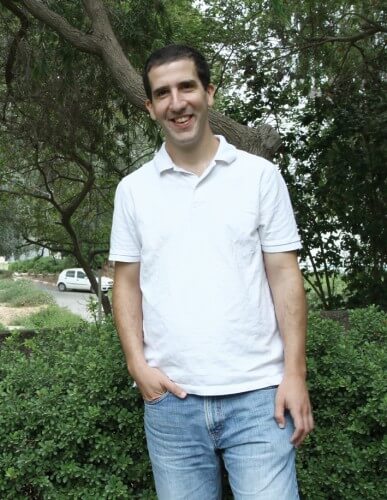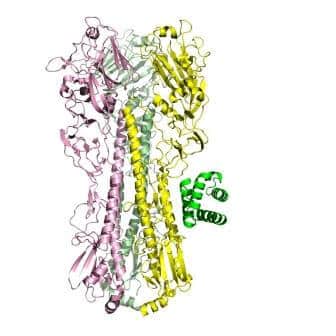The proteins stuck to each other - or not. And all we have to do is find out who sticks to whom in order to bring about one vital process or another; Or, in other cases, who is holding back who. Now researchers from the Weizmann Institute have succeeded in reshaping the surface of protein molecules

Jacob Braid (Adir Miller), in Avi Nesher's "I used to be", assures Yozhi (Dev Navon) that he can find a suitable match even for "extraordinaries with fins". Matching between people (with or without fins) is a mysterious phenomenon. Our ability to influence it is very limited. Until not long ago, this was also the case in everything related to the adjustment and adhesion of protein molecules. The proteins stuck to each other - or not. And all we have to do is find out who sticks to whom in order to bring about one vital process or another; Or, in other cases, who is holding back who.
This situation is changing these days, thanks to a first-of-its-kind method for "fine-tuning" different physical properties on the surface of the protein molecule. The method, developed by Dr. Sheral Fleischman from the Department of Biological Chemistry at the Weizmann Institute of Science, and his research partners at the University of Washington (Seattle), allows them to redesign the surface of protein molecules, so that they fit target proteins and bind to them strongly. In this way, scientists have already succeeded in creating proteins, which do not exist in nature, so that they will bind to a vital site on the surface of the influenza virus and inhibit its activity. The fact that this site is well conserved in the evolution of the virus, and is therefore present in many strains of influenza, including bird flu and swine flu, allows the designed protein molecules to inhibit a variety of strains of influenza viruses. These days, experiments are being done with these molecules in a subsidiary company of the pharmaceutical company "Johnson & Johnson", to examine possibilities of developing a universal preventive treatment for the flu. The possibility of using the method also for treatment that will stop the viruses after they have already penetrated the body is also being tested.
The new method, which was recently published in the scientific journal Cell, is based on the calculation of physical properties on the one hand, and on databases of molecular structures built in recent years, among others by Weizmann Institute of Science scientists, on the other hand. Dr. Fleishman says that the process begins with a theoretical calculation of an ideal molecular structure, which will form the core of the attachment between the planned protein and the target protein. After that, the database of protein structures is scanned, looking for natural molecules that will allow, as far as possible, the integration of the planned attachment core. In the case of influenza viruses, several dozen proteins were designed to include the binding core. Of these, in laboratory experiments, five molecules were able to stick to the target site, and one of them was able to inhibit the infectivity of various influenza viruses.

"Actually," says Dr. Fleishman, "the computational tools and the experimental approach in which the designed molecules are tested allow us today to create molecules that do not exist in nature and can perform molecular activities with a wide variety of uses in medicine, diagnostics, and biotechnology." In other words, what nature does not do, the computer and the experiment will do. This method of operation may open new ways to design medicines, among other things in the field of developing personal medicine, as well as in various industrial processes.
